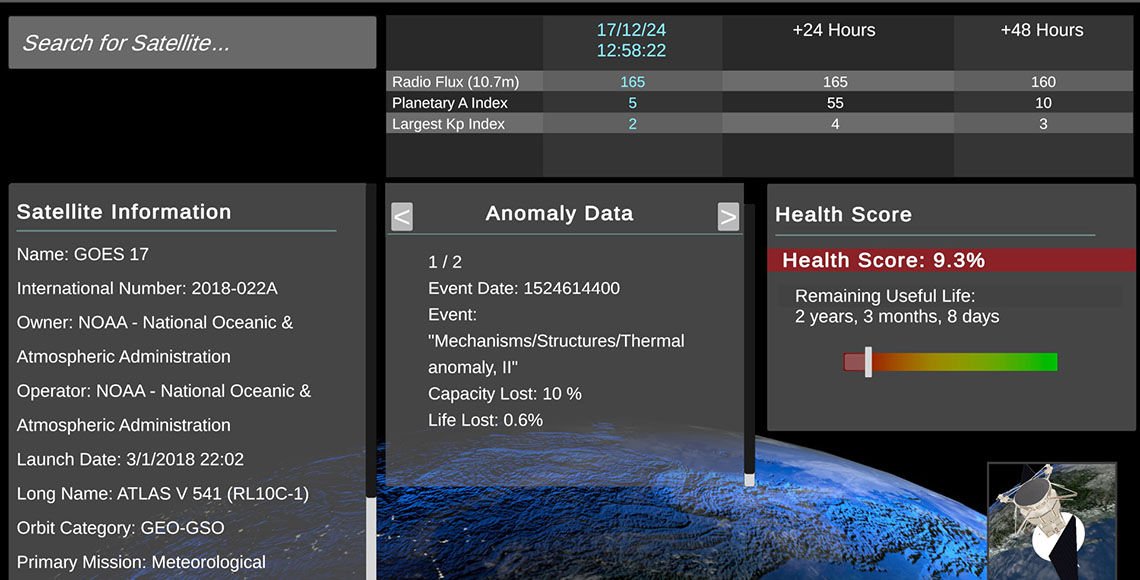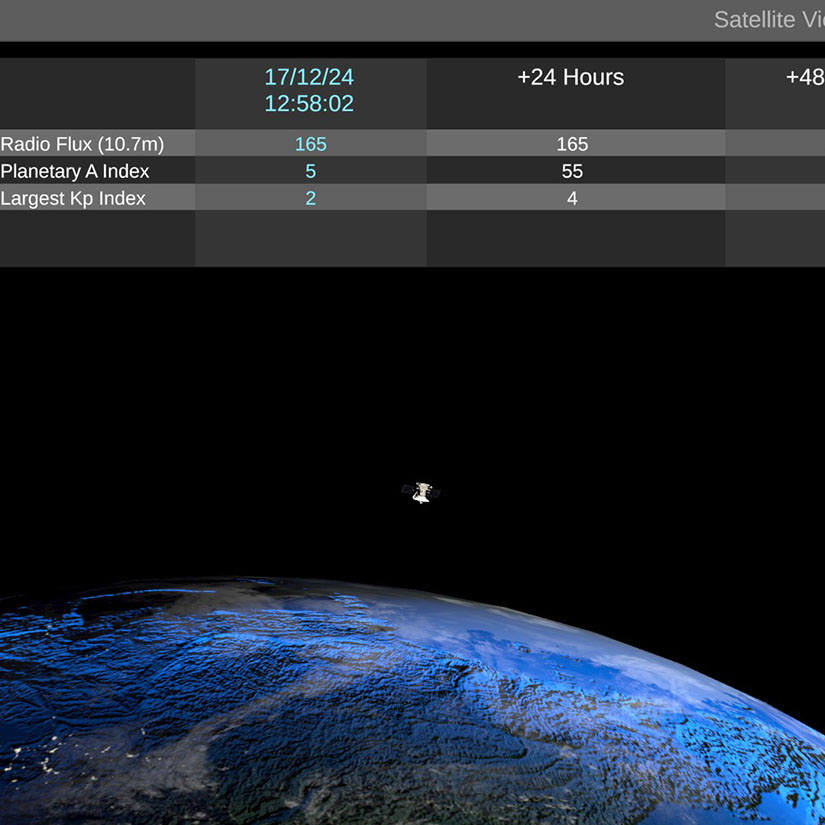NASA estimates that approximately 3,000 satellites are operating in Earth’s orbit. Satellites are critical assets for various applications, such as telecommunications and weather forecasting, but satellite degradation and failure can significantly affect capabilities that influence civil, defense and commercial sectors.
To help address challenges for optimal efficiency, Mechanical Engineering Professor Abdel Bayoumi, research scientist Rhea Matthews and their research team completed a project late last year that aimed to monitor a satellite’s operational life and predict failures. The two-year, $400,000 project was funded by the South Carolina Department of Commerce and in partnership with Fraunhofer South Carolina Alliance and the Los Alamos National Lab.
By analyzing data and environmental factors, predictive analytics offer insights into a satellite’s performance to forecast potential issues and allow for better-informed decision-making. The benefits include enhanced operational reliability and longevity of satellite systems.
“With predictive analytics, you can extract the data, characterize the performance and determine a component’s life span. Then a correction can be made since the user can move from monitoring the data to having control for solving the problem,” Bayoumi says.
During the project, data affecting a satellite’s life was processed and filtered to develop a structured dataset for model development. According to Matthews, she had to determine which sources were available for space weather (such as solar flares) and satellite-related data.
“We went with NOAA for space weather data and used a web-based platform called Seradata for the satellite-related data,” Matthews says. “Seradata also had information on anomalies that satellites faced, including the type and severity.”
After obtaining the data sources, Matthews worked to determine a time range to align and connect the days when the anomalies occurred and identify some of the key features.
“We had hundreds of parameters, so we did some analysis to narrow to which ones gave us the most information. From there, we figured out how these features connected to describe the relationships that we wanted,” Matthews says.
The data was processed into an algorithm that relayed the results. Two models were developed for anomaly predictions. One predicted whether an anomaly would occur on a given day, while another estimated the probability of an anomaly occurring at different severity levels.
After the data was processed and initial models were developed, Bayoumi’s team built machine learning models, which was the first step to predicting anomalies. The model also estimated remaining useful life and assessed satellite health.
“It sensed the type of weather and parameters that could lead to certain anomalies. These were related to the health and performance of the satellite,” Matthews says.
But the project went in a different direction than originally planned with an unexpected development. While initial models utilized historical data, new models could be developed using real time data by designing a user-based dashboard.
The artificial intelligence-powered dashboard tool facilitated interaction. The user interface translated back-end data, which displayed critical space weather parameters, and current readings and forecasts. A search function also allowed a user to search for specific satellites. The dashboard included specific anomaly data, and events that have or could occur.
“You have a system and it's extracting the data from the system itself and processing it using real-time data in modeling the process. An operator then takes that information and makes a decision,” Bayoumi says.
The dashboard includes other descriptions on specific models. A health score is derived from four parameters: age, design life, probability of reaching design life, and anomalies, and a numerical value is created with the satellite’s current condition. A remaining useful life (RUL) calculation was the metric for estimating the time remaining before a satellite reaches the end of life.
“The health score was an indicator that we developed. On a scale between zero and one, one represents being perfect, while zero would indicate it’s time to retire,” Matthews says. “The RUL gave us a value based on the current set of conditions and what happened in the past, such the expectation of how many days or years are left in the life of the satellite. Both provided a reliable forecast of operational availability.”
Bayoumi has applied digital transformation on different research projects, and he continues to see how their methodology can be applied to different applications.
“It’s like a Greek salad - very tasty but not a single ingredient will give you the same taste,” Bayoumi says. “With the general concept of digital transformation, you get good data. In the military, you get sensing information. In NASA, you get sensing information and have the digital built into the system.”
Bayoumi’s team has provided an overview of their work during the first phase of the project to NASA and stakeholders who could benefit from the project. A collaboration was identified with a space weather expert at the Los Alamos National Laboratory. Future work includes refining predictive algorithms for enhanced accuracy, incorporating additional data sources, and exploring new applications of machine learning and predictive analytics in satellite operations.
“Phase zero produced a solid framework and prototype that laid a strong foundation for future expansions. Additional models may be developed based on specific outcomes, while current models may be enhanced by incorporating additional data,” Bayoumi says. “The goal is to build upon our initial success to continue advancing satellite performance optimization and operational decision-making.”

